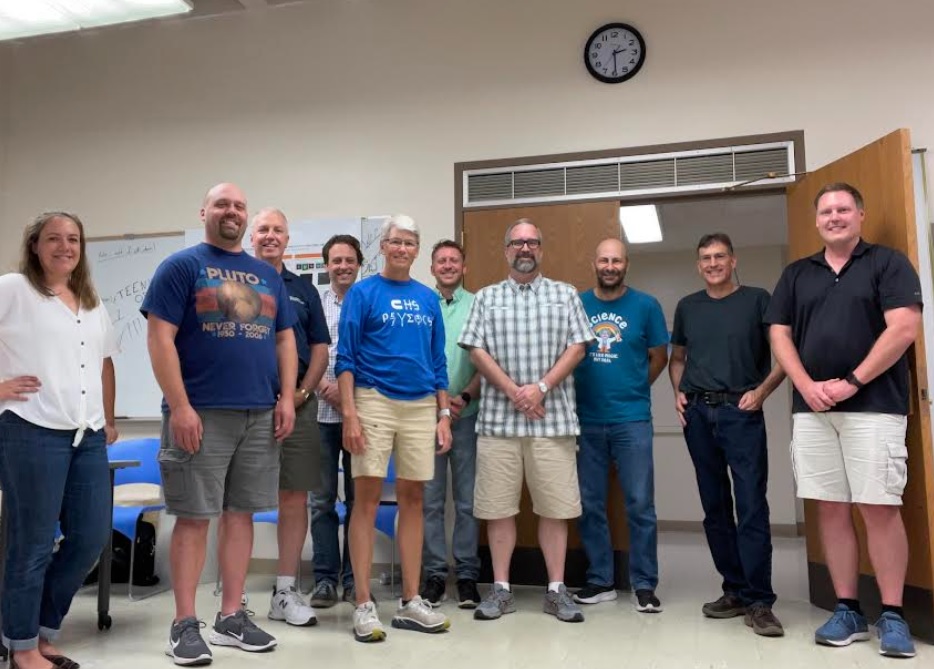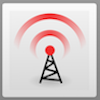Friday Flyer - May 19, 2023

Spotlight on the Syracuse University QuarkNet Center
The Syracuse University center hosted a 3-day workshop in early August, 2022 that was developed by mentor Steven Blusk, lead teachers Michael Madden and Brian Bealer, along with QuarkNet staff. The first day was a mix of talks and activities, including a variation on a QuarkNet classic: Rolling with Rutherford. This was followed up with a talk by Syracuse physics professor Matt Rudolph on the concept of cross section in particle physics. The day ended with a tour of the Syracuse high energy physics laboratory. The second day was largely dedicated to the Higgs@10 workshop and included a talk from Blusk on the Higgs that focused on both the discovery of the Higgs and what has been learned about the Higgs since 2012. The final day began with a couple of presentations by Syracuse graduate students on LIGO followed by a tour of two LIGO laboratories at Syracuse. Teachers then worked through a couple of E&M-related activities from the DAP, then engaged in a share-a-thon where they shared ideas, activities and best practices with each other. Blusk led the group through a discussion on teaching the laws of physics, then the workshop ended with a discussion on classroom implementation plans.


News from QuarkNet Central
Coding Camp 0: Are you interested in introducing Python and Google Colab to your students? If so, this virtual event might be for you! This opportunity will take place virtually on June 20-21, 2023. Learn more about this opportunity, including how to register, on this Coding Camp 0 informational page.
International Muon Week 2023 Results Results: Cosmic fellow Jeff Rodriguez has put together final results from 2023 International Muon Week in both a pdf summary and a video tour. Thanks, Jeff!
QuarkNetters in the News: The KSU QuarkNet center was recently featured in a K-State News article. Check it out! In Ohio, QuarkNet Coding fellow Carol Burns received recognition for enhancing student experience by incorporating projects that bring in real world data and applications.
Reminder for Center Leads: It's that time of year again when planning summer workshops at centers is in full swing. Please keep in mind that there are several workshops that QuarkNet staff and/or fellows can bring to teachers at your center. Questions? News of your plans? Your QuarkNet staff members are here to help! Please contact us!

Physics Experiment Roundup
We'll start off with researchers at SLAC, who are improving our understanding of particle beams in accelerators. Also from SLAC: SuperCDMS detector towers ready to search for dark matter. At Argonne National Laboratory...A farewell to a particle accelerator that will be replaced. At Brookhaven National Lab, the Relativistic Heavy Ion Collider's 23rd physics run is underway with new and upgraded detectors...and smashing gold ions!
From the LHC...Hunting for supersymmetry with tau leptons, new results from ATLAS, and a look behind the scenes at the ATLAS Control Room.

Resources
From Symmetry...Even visible matter can be hard to see and stories inspired by particle physics. QuarkNet mentor and College of DuPage physics professor Tom Carter is quoted in this article on getting community college students involved in research.
From the Fermilab YouTube page: "What is Driving Particle Physics?" with Don Lincoln, and "Can AI Do Neutrino Physics?" with Kirsty Duffy of Even Bananas.
From the May issue of The Physics Teacher: "Physics of the String Shooter," "We Can't Ignore the Pandemic Fallout in Our Physics Classes," "Serious Physics on a Playground Swing...", and "Physics in a Space Science Context: Learning Sequences to Teach Electromagnetic Waves and Fields."
From APS Physics: An educational comic strip on "How Our Solar System Avoids Planet Collisions." Here's more on on our solar system's stability. Also, a recipe for an edible, rechargeable battery.

Just for Fun
Use equations to draw curves to maneuver through a series of points in SineRider. (H/T Marge Bardeen) Speaking of waves, how about a sine wave template for drawing waves on your board?
Next...elevated fun with variations on a theme of "up" in Q&A form...
Q: If a balloon is 60,000 feet above the surface of Earth, how far can it "see"? A: See this. Q: How might that balloon work? A: Check out this podcast. While the balloon travels up, it may encounter convective storm systems and associated clouds. So, one might ask the following...Q: How do convective clouds form? A: This Physics Today article will be helpful here.
We'll end a bit farther "up"...From NASA STEM, check out astronaut Nicole Mann's demonstrations done on the International Space Station about properties of water.
QuarkNet Staff
Mark Adams: adams@fnal.gov
Ken Cecire: kcecire@nd.edu
Spencer Pasero: spasero@fnal.gov
Shane Wood: swood5@nd.edu
